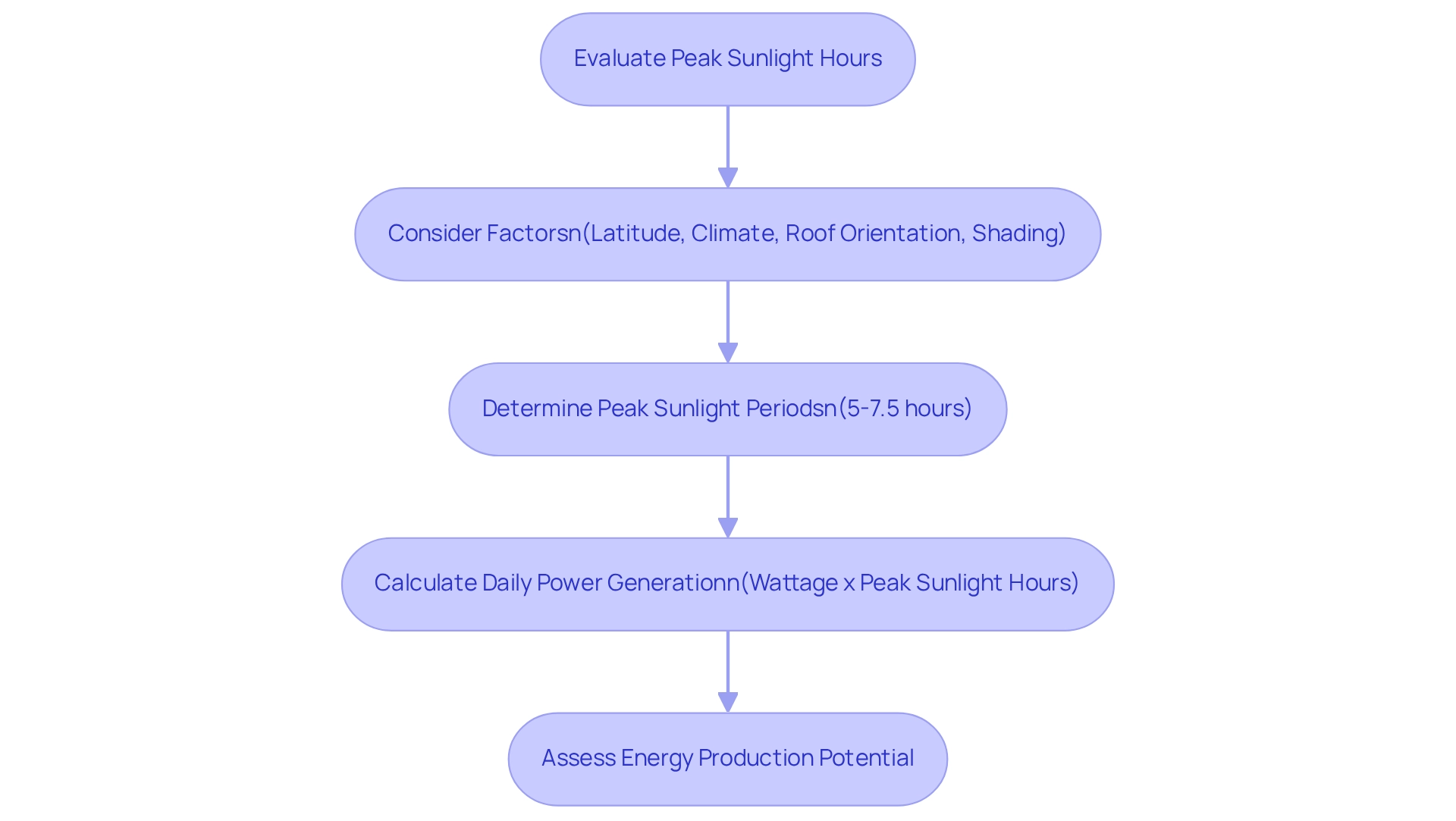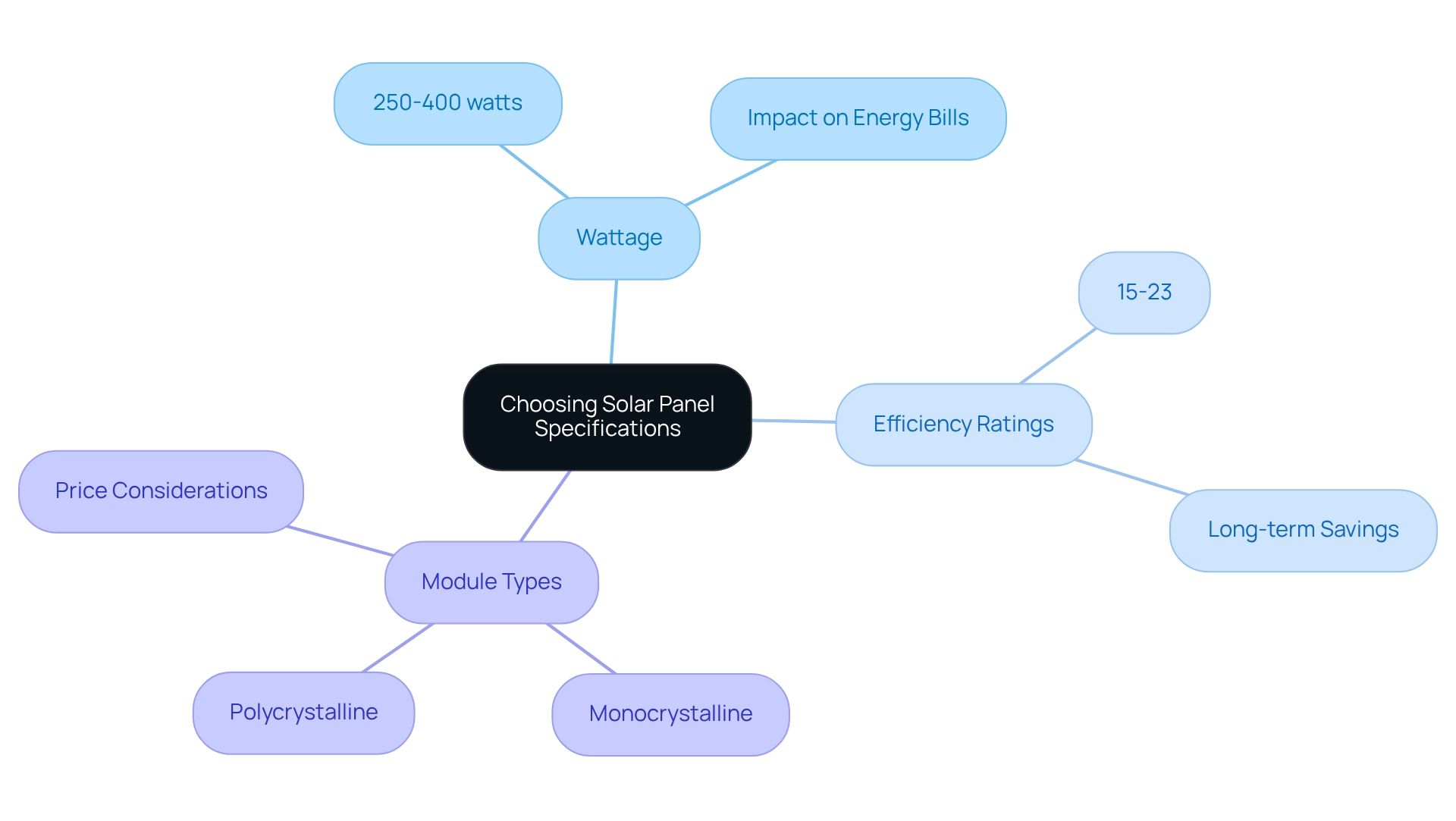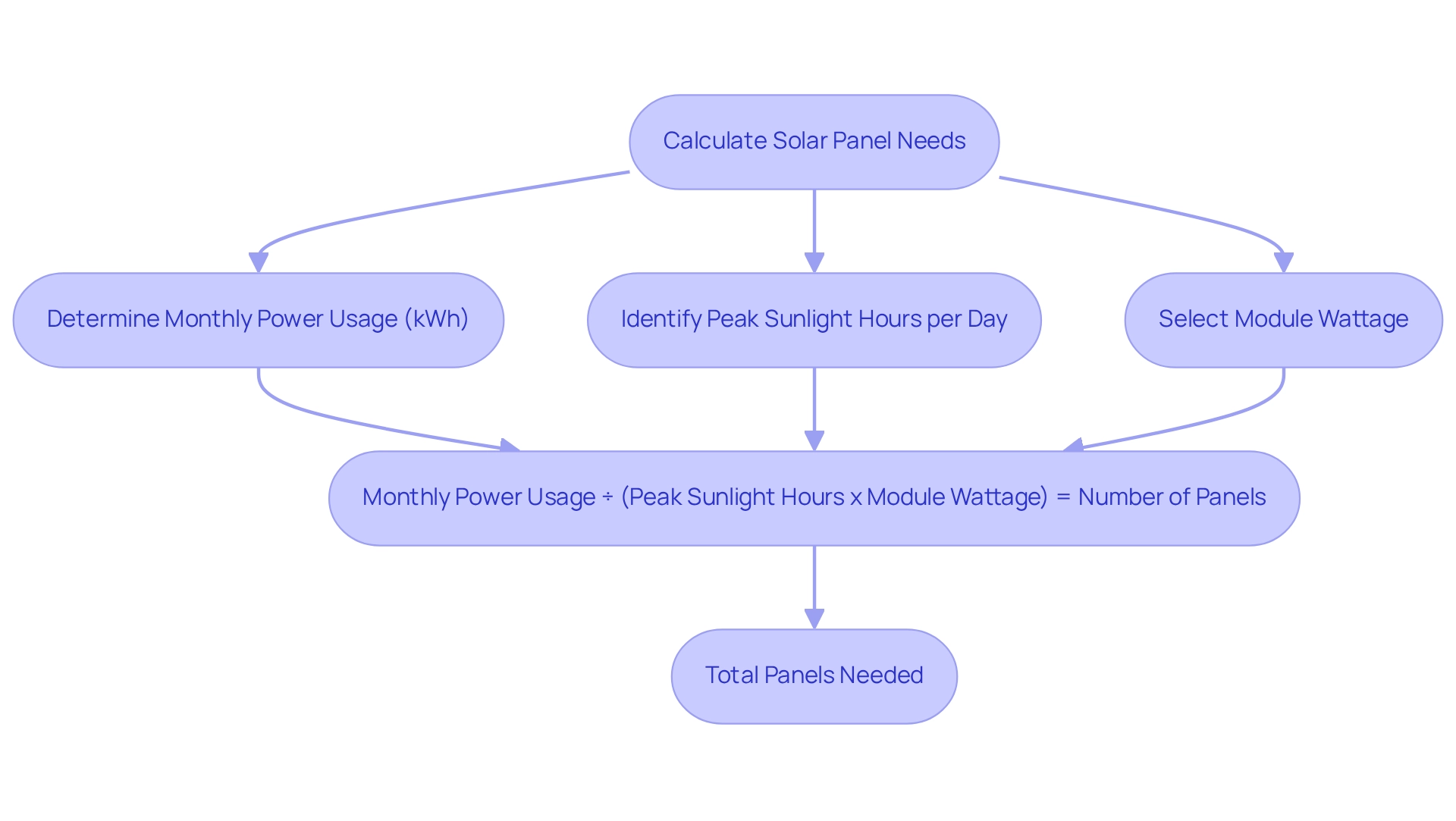Overview
As a homeowner, you may often find yourself concerned about rising energy bills and the impact of your energy consumption. Understanding how many solar panels are needed for your home can be a crucial step towards achieving energy independence and sustainability. By assessing your energy usage, evaluating the peak sunlight hours in your area, and choosing the right solar panel specifications, you can take control of your energy future.
It’s common to feel overwhelmed by the process, but rest assured, this article provides a detailed guide to help you navigate these important decisions. By grasping the nuances of your energy needs, sunlight availability, and panel efficiency, you can accurately calculate the number of solar panels required for your home. This knowledge not only empowers you but also contributes to a more sustainable lifestyle.
Together, we can work towards a greener future. Embracing solar energy not only reduces your reliance on traditional energy sources but also enhances your home’s value and reduces your carbon footprint. If you’re ready to explore this transformative journey, we encourage you to reach out for support and guidance. Let’s take this step towards energy independence together.
Introduction
We understand that rising energy bills can be a significant concern for homeowners. The transition to solar energy is not just a trend; it represents a vital step toward sustainable living and reducing those costs. As more individuals seek to harness the sun’s power, it becomes crucial to grasp the intricacies of solar panel installation. This guide will walk you through the essential steps of:
- Assessing your energy consumption
- Evaluating peak sunlight hours
- Selecting the right panel specifications
- Calculating how many panels you may need
By equipping yourself with this knowledge, you can make informed decisions that not only benefit your household but also contribute to a greener planet. Together, we can embrace this journey toward energy independence and sustainability.
Assess Your Home’s Energy Consumption
To begin, we understand that evaluating your electricity statements from the previous year can feel daunting, but it’s a crucial step in understanding your usage. Look for the ‘Total kWh Used‘ figure on each bill; this number reflects your monthly consumption in kilowatt-hours (kWh).
If you’re seeking a more precise measurement, consider using a monitoring device for a month to track your consumption patterns. Remember, it’s common to overlook seasonal variations—heating and cooling needs can significantly impact your overall consumption.
Once you’ve calculated your total yearly kWh, simply divide that figure by 12 to find your average monthly power usage. In California, the typical household’s monthly power usage is anticipated to be approximately 550 kWh in 2025.
This assessment is vital for effective panel planning, and together we can work towards achieving energy independence and sustainability for your home by calculating for single family home are necessary.
Evaluate Peak Sunlight Hours in Your Area
To efficiently evaluate for your home, it’s important to first consider the typical peak sunlight periods in your area. In California, these periods generally range from 5 to 7.5 hours each day, influenced by factors such as latitude, climate, roof orientation, and shading. We understand that navigating these details can feel overwhelming, but web resources and sunlight estimation tools can provide personalized information based on your zip code, helping you make informed decisions.
To determine your daily sunlight potential, simply multiply the number of peak sunlight periods by the total wattage of your devices. For instance, if you have a 300-watt panel and receive 6 peak sunlight periods, your daily power generation would be calculated as follows:
- 300 watts x 6 periods = 1800 watt-periods, or 1.8 kWh.
This straightforward calculation empowers homeowners to assess their power production potential, ensuring that you can optimize your investment in solar technology.
Furthermore, understanding the average peak sunlight periods by region in California for 2025 can significantly enhance your power forecasts. A comparative examination of peak sun hours across different states reveals notable variations that can affect renewable potential, making it a valuable tool for assessing your options. By utilizing this information, together we can confidently navigate the transition to renewable energy and improve your home’s energy efficiency. Let’s work towards a sustainable future together.
Choose the Right Solar Panel Specifications
When considering solar modules, it’s natural to feel overwhelmed by choices. You might be worried about how these decisions will impact . Most residential modules range from , and while higher wattage modules can generate more energy, they may also come with a higher price tag. It’s important to weigh these factors carefully. Efficiency ratings, typically between 15% and 23%, indicate how effectively a system converts sunlight into electricity, which can significantly affect your long-term savings.
You may find that monocrystalline modules are often more efficient, yet they tend to be pricier than their polycrystalline counterparts. We understand that making the right choice can feel daunting, but exploring various brands and models can lead you to the best fit for your home. Consulting with can also offer valuable insights tailored to your specific needs.
Together, we can navigate this journey towards energy independence. By understanding your options and seeking support, you can make informed decisions that benefit both your home and the environment.
Calculate the Total Number of Solar Panels Needed
Are you feeling overwhelmed by rising energy bills? You’re not alone. Many homeowners share this concern, and it’s completely understandable. Exploring solar energy can be a transformative step towards not just reducing those bills but also achieving energy independence.
To find out how many solar panels for a single family home are needed, you can use this simple formula:
(Monthly power usage in kWh) ÷ (Peak sunlight periods each day x Module wattage) = Number of modules.
For instance, if your typical monthly power usage is 600 kWh, and you receive about 6 peak sunlight hours each day with 300-watt modules, the calculation would be:
600 kWh ÷ (6 hours x 0.3 kW) = 333.33.
This raises the question of how many solar panels for a single family home would be necessary to meet your power needs, which is approximately 334 panels.
Remember, it’s always wise to round up to the nearest whole number and to consider additional factors such as shading, roof space, and local regulations. Most utility companies allow installations that cover up to 120% of a home’s annual power consumption, which can provide a buffer for those unexpected energy spikes.
Consulting specialists in renewable resources can offer you personalized assessments based on your unique power usage and site conditions. Higher efficiency modules, which can achieve up to 24% effectiveness compared to the average 20%, may reduce the total number of units needed, although they typically come at a higher cost.
By carefully evaluating your power requirements and seeking expert advice, you can optimize your solar installation for maximum effectiveness. Remember, the efficiency of solar panels is crucial in calculating how many solar panels for single family home are needed, so it’s essential to keep this in mind as you plan .
Together, we can work towards a more sustainable future.
Conclusion
Transitioning to solar energy is not just a significant step towards reducing energy bills; it’s a heartfelt commitment to promoting sustainable living. We understand that the journey begins with a thorough assessment of your energy consumption, allowing you to grasp your specific needs. By analyzing past electricity bills and considering seasonal variations, you can establish a solid foundation for your solar planning.
Understanding the peak sunlight hours in your location is equally crucial. This knowledge not only helps in estimating daily solar energy production but also ensures that your investment in solar technology is maximized. With resources available to assist in this evaluation, you can confidently determine your potential for solar energy generation.
Choosing the right solar panel specifications is another vital element in the installation process. Factors such as wattage, efficiency, and type of panel greatly impact both energy output and overall cost. By researching different options and consulting with solar providers, you can find the best fit for your unique circumstances, ensuring that your choices align with your values and needs.
Finally, accurately calculating the total number of solar panels needed ensures that your energy needs are met effectively. This calculation, combined with considerations for efficiency and local regulations, allows for a tailored approach to solar installation. By taking these steps, you can not only achieve energy independence but also contribute to a more sustainable future.
Embracing solar energy is not just a financial decision; it is a commitment to a greener planet. With careful planning and informed choices, the journey towards harnessing the sun’s power becomes an empowering experience that benefits both you and the environment. Together, we can make a difference—let’s work towards a brighter, more sustainable future.






